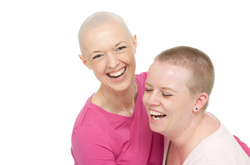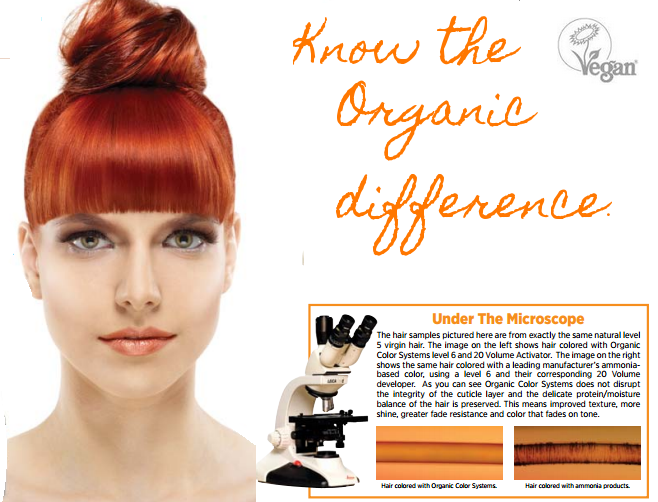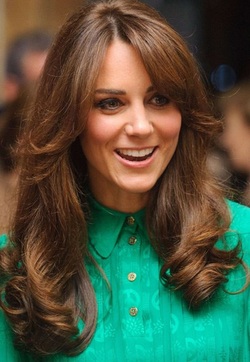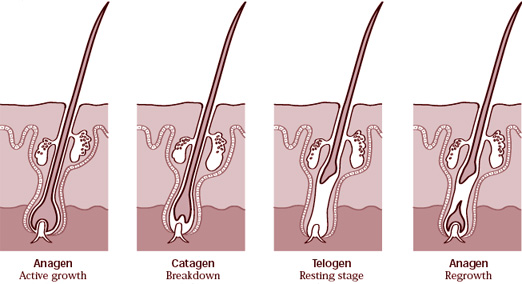
What can we do for our clients, friends, and family members that are battling the terror that follows the effects of cancer treatment? Hair loss due to these intense treatments can be both painful emotionally as well as physically. How can a patient feel positive and strong when their professional image and personal style has been shaken to the core by advanced baldness?
What to understand about someone going through the emotional loss of their hair…
Many cancer patients are frightened of the treatment causing hair loss and afraid of eventual death from the disease. Hair loss is not about vanity. Our hair is intrinsic to our body image, which compromises who we are, how we feel about ourselves and what we want to be.
Hair loss is a constant reminder of having the disease in our bodies and is a powerful visual statement to others that we are sick. As salon professionals, when we see a client in distress over their hair loss, we want to help ease their mind as best we can and here are a few tips in helping them cope.
A cooling treatment that soothes and cools the hair follicles, has been noted in some cases to reduce the amount of chemotherapy that reaches the hair follicles and in turn can reduce the amount of hair that will fall out. Here are a few ways to go about the cooling of the scalp to soothe side effects.
We recommend that the client asks her doctor about this “cool cap” method, as it only works for certain types of chemo- treatments.
Some commercially made “cool caps” contain a gel that stays cold for a long period of time. The caps are worn for some time before the chemo drugs are given. It is worn while the treatment is given and then up to two hours after. Your doctor will be able to tell you if the scalp cooling is a proper treatment for you.
Another type of chill type treatment that has benefits is offered by Organic Salon Systems. They offer an innovative white tea treatment and Ginko treatment for sensitive scalps infused with high quality USDA Organic ingredients to nourish the scalp and hair.
White Tea Treatment Hair Sets : eco Certified Organic White Tea Extract made with natural, gentle ingredients. They are a professional line that deeply repairs, has anti-oxidization properties and can restore hair strength and elasticity. Place the white tea packet in cold water prior to the application or service for cooling effect.
Ginko Hair Treatment Set: USDA Organic Gingko Leaf Extract. Helps rebuild hair strands and soothe scalps while creating a complete nourishing effect. Place packet in cold water prior to application or service for cooling effect.
Scalp care is crucial after hair loss from chemotherapy treatments. When the hair begins to grow back, the scalp can become scaly due to the severe dryness. Organic Salon Systems offers a Soothe Plus Treatment line and is an excellent choice for soothing sensitive scalps. This is offered in a treatment kit with three superior products that promote quick healing and high quality ingredients such as aloe (the all healing plant), fennel , willow bark, comfrey, and many more ingredients all geared towards having anti-inflammatory, soothing and protective healing properties.
Applying a daily dose of the Soothe Plus spray treatment to the scalp can help reduce the inflammation and calm irritation to follicles. It is also best to guide cancer patients from using “medicated” shampoos, as these are unnecessary and can irritate scalps by drying them out.
How long after chemo is it ok to color hair? This depends on the condition of the new hair growing back and the scalp condition. In some cases, it is good to do treatments to balance hair back to normal, as hair can grow back in a different texture and often unruly. With the Organic Color Systems line, we can offer clients hair color as a service as soon as their hair is long enough and scalp appears healthy. This is a healthier option for them for hair color due to the non-ammoniated formula and non-toxic ingredients that make up the color formulation.
There may be cases that the scalp or hair is not ready for a color or perming. Examples of this would be:
We recommend that your clients brush their hair gently and even use a baby brush with soft bristles. They can use wide toothed combs. At night, wear a hair net, soft cap or turban to collect any loose hair. Always refrain from using excessive heat as this can cause dryness and make the hair weak which will then break. Avoid wearing tight bands as they will additionally cause stress and damage while they sleep. They should always avoid sleeping in rollers as well.
A poor diet, stress, and alcohol can make the condition of hair worse. It is important to eat well with plenty of Organic fruits and vegetables and always drink plenty of water. This will keep the body in good condition.
Written By: Jennifer Andrews, for Organic Salon Systems
What to understand about someone going through the emotional loss of their hair…
Many cancer patients are frightened of the treatment causing hair loss and afraid of eventual death from the disease. Hair loss is not about vanity. Our hair is intrinsic to our body image, which compromises who we are, how we feel about ourselves and what we want to be.
Hair loss is a constant reminder of having the disease in our bodies and is a powerful visual statement to others that we are sick. As salon professionals, when we see a client in distress over their hair loss, we want to help ease their mind as best we can and here are a few tips in helping them cope.
A cooling treatment that soothes and cools the hair follicles, has been noted in some cases to reduce the amount of chemotherapy that reaches the hair follicles and in turn can reduce the amount of hair that will fall out. Here are a few ways to go about the cooling of the scalp to soothe side effects.
We recommend that the client asks her doctor about this “cool cap” method, as it only works for certain types of chemo- treatments.
Some commercially made “cool caps” contain a gel that stays cold for a long period of time. The caps are worn for some time before the chemo drugs are given. It is worn while the treatment is given and then up to two hours after. Your doctor will be able to tell you if the scalp cooling is a proper treatment for you.
Another type of chill type treatment that has benefits is offered by Organic Salon Systems. They offer an innovative white tea treatment and Ginko treatment for sensitive scalps infused with high quality USDA Organic ingredients to nourish the scalp and hair.
White Tea Treatment Hair Sets : eco Certified Organic White Tea Extract made with natural, gentle ingredients. They are a professional line that deeply repairs, has anti-oxidization properties and can restore hair strength and elasticity. Place the white tea packet in cold water prior to the application or service for cooling effect.
Ginko Hair Treatment Set: USDA Organic Gingko Leaf Extract. Helps rebuild hair strands and soothe scalps while creating a complete nourishing effect. Place packet in cold water prior to application or service for cooling effect.
Scalp care is crucial after hair loss from chemotherapy treatments. When the hair begins to grow back, the scalp can become scaly due to the severe dryness. Organic Salon Systems offers a Soothe Plus Treatment line and is an excellent choice for soothing sensitive scalps. This is offered in a treatment kit with three superior products that promote quick healing and high quality ingredients such as aloe (the all healing plant), fennel , willow bark, comfrey, and many more ingredients all geared towards having anti-inflammatory, soothing and protective healing properties.
Applying a daily dose of the Soothe Plus spray treatment to the scalp can help reduce the inflammation and calm irritation to follicles. It is also best to guide cancer patients from using “medicated” shampoos, as these are unnecessary and can irritate scalps by drying them out.
How long after chemo is it ok to color hair? This depends on the condition of the new hair growing back and the scalp condition. In some cases, it is good to do treatments to balance hair back to normal, as hair can grow back in a different texture and often unruly. With the Organic Color Systems line, we can offer clients hair color as a service as soon as their hair is long enough and scalp appears healthy. This is a healthier option for them for hair color due to the non-ammoniated formula and non-toxic ingredients that make up the color formulation.
There may be cases that the scalp or hair is not ready for a color or perming. Examples of this would be:
- The scalp is scaly, sore or irritated.
- Hair is dryer than normal.
- Hair is rough to the touch.
- Hair is lighter in color than before the treatment.
- Hair is breaking or not growing normally.
We recommend that your clients brush their hair gently and even use a baby brush with soft bristles. They can use wide toothed combs. At night, wear a hair net, soft cap or turban to collect any loose hair. Always refrain from using excessive heat as this can cause dryness and make the hair weak which will then break. Avoid wearing tight bands as they will additionally cause stress and damage while they sleep. They should always avoid sleeping in rollers as well.
A poor diet, stress, and alcohol can make the condition of hair worse. It is important to eat well with plenty of Organic fruits and vegetables and always drink plenty of water. This will keep the body in good condition.
Written By: Jennifer Andrews, for Organic Salon Systems



 RSS Feed
RSS Feed
